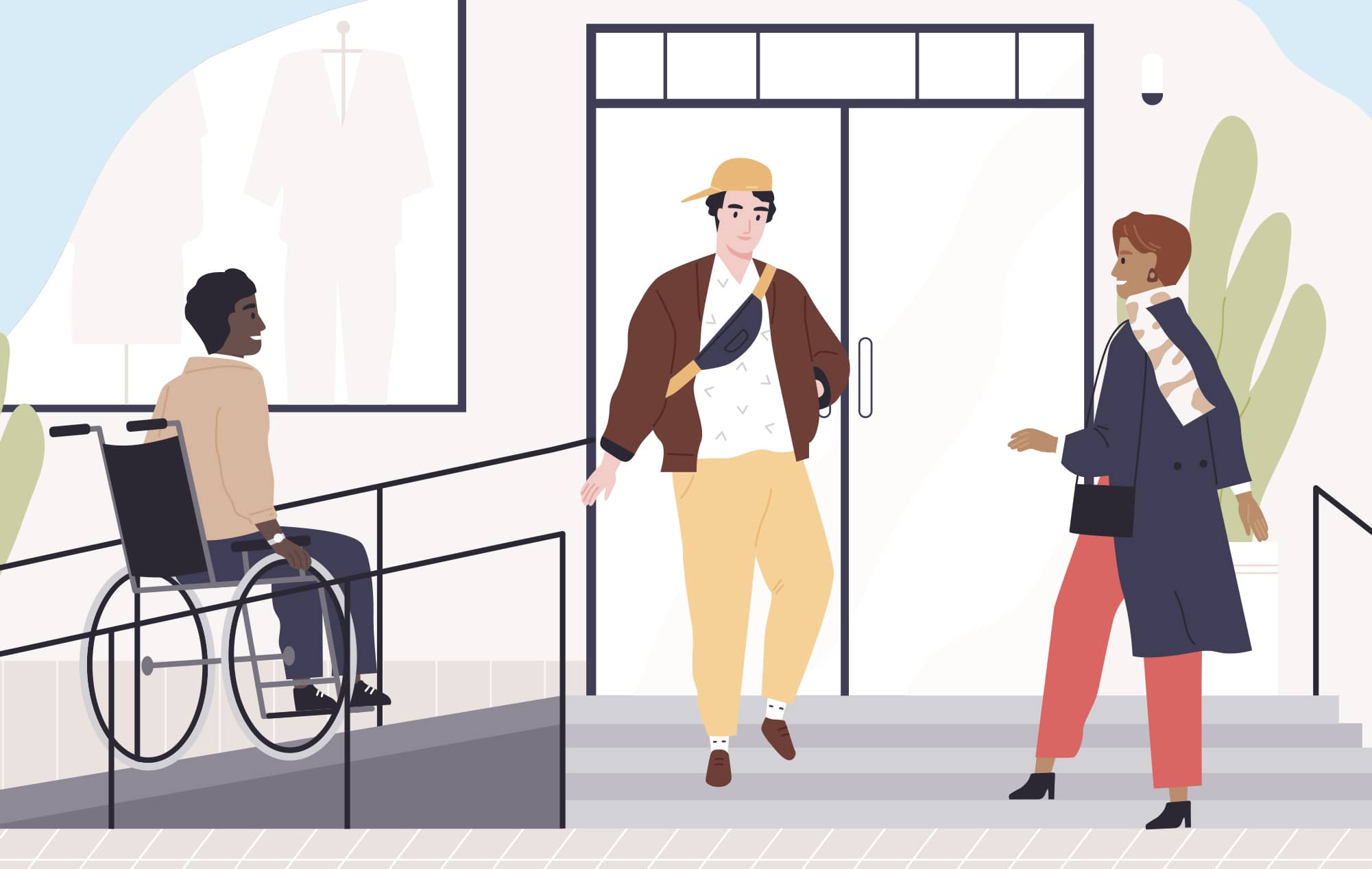Working to overcome the history of exclusionary practices and norms in your particular workplace or industry can feel disheartening at times.
In reaction to the long history of discrimination and hardships experienced by professionals with disabilities, the modern American disabilities movement began to bring about significant changes in the 1960s. More and more businesses are continuing such strides by reconstructing their work cultures to be more inclusive and belonging.
Here are several things you can do to help your employees with disabilities better thrive.
What Do We Mean by Inclusion & Belonging?
Increasingly included as part of a triad alongside the principle of accessibility—encompassing system designs that enable all people to participate—inclusion and belonging are fast becoming central to discussions around improving workplace culture.
But how do they relate to one another?
Accessibility is about ensuring everyone has the opportunity to fully engage in professional and public life, without having to overcome additional barriers because one is blind or visually impaired, d/Deaf or hard of hearing, has a learning or cognitive disability, speech or language disorder, or lives with a physical or mental health disability. This pertains to physical obstacles such as inaccessible buildings, for example, as well as digital experiences regarding non-inclusive website designs.
Inclusion and belonging aim to further enhance accessibility efforts, or build upon their collective foundation.
Inclusion means each person not only has the technological tools necessary to contribute professionally, but ensures the practices and norms within a team or organization help each person feel like they can engage fully, regardless of disability status. An inclusive work culture removes social stigmas around disabilities.
Belonging extends this ethos even further. It’s common for people to evoke the virtue of tolerance in these discussions, but advocates of belonging feel it’s not a sufficiently robust value. Tolerance implies a certain degree of moderated dislike, disinterest, or discomfort regarding that which is being tolerated.
By contrast, embracing belonging is about creating a profound sense of community. When you feel welcomed and supported, comfortable enough bringing your whole self to work, you know you belong. This type of acceptance can have a profound effect on professionals with disabilities and their teams, not only improving productivity but fostering better overall well-being.
So what can you do to create a more inclusive and belonging work culture?
Creating an Inclusive & Belonging Work Culture
Transforming your work culture into a genuinely inclusive one can feel daunting. Here are several areas you can focus your efforts on as you work to become a place professionals with disabilities feel they can belong and thrive.
Digital Inclusion
For many of us, the digital space is where we first encounter a brand, organization, or business. It colors our overall impression of who they are and what they value. If this is true, companies that want to be more inclusive should start with digital inclusion.
You can begin by adhering to the Web Content Accessibility Guidelines (WCAG), a collection of accessibility protocols intended to make your digital platforms open to everyone, regardless of disability status.
For instance, to accommodate people with cognitive or learning disabilities, that might mean allowing more time on forms or giving users longer to read content before it times out.
Similarly, professionals with physical disabilities often rely on assistive technologies and screen readers to access websites. Ensure your website can be fully functional from a keyboard.
Roughly 37 million adult Americans report hearing impairments. Be sure all videos and web elements feature closed captions. Since professionals who are d/Deaf or hard of hearing rely on assistive technology, it’s important your website not have audio that autoplays. This can disrupt user experience and create unnecessary barriers to your content.
For professionals who are blind or visually impaired (BVI), alt text on images or fonts with sufficient color contrast guarantee fewer people are barred from reading your content or engaging digitally.
Inclusive Hiring Practices
To employ more professionals with disabilities, you need to attract them during the hiring process. Including a request for any accommodations potential employees may need communicates your commitment to accessibility and inclusion.
“It’s about asking for accommodations in the interview process knowing it’s not going to get them marked down on their application,” articulates Crystal Preston-Watson, a senior digital accessibility analyst at Salesforce, “and letting people know that if they do apply and get a job, that they don’t need to cover up their disability.”
Where you post job descriptions goes a long way in helping overcome the unemployment gap between disabled professionals and their non-disabled peers, as well. For instance, Inclusively is a job platform centered on helping professionals with disabilities acquire gainful employment, which can expand the reach of job postings alongside the usual suspects such as LinkedIn or Indeed.
Offer Remote Work Options
Traditionally, office spaces have been designed without people with disabilities in mind. They’re often loud, busy, physically inaccessible, and create challenges for people whose disabilities require flexible work routines.
Providing employees with varied remote work options removes transportation barriers, enables more disability friendly work environments, reduces sensory overload and other disruptive stressors, and facilitates a variety of greater accessibility options. Offering remote work opportunities is beneficial for everyone, but especially people with disabilities.
Making your websites more accessible, hiring processes more inclusive, and remote work options more plentiful are just a few ways you can create a belonging work culture. Fortunately, these are incredibly straightforward ways to begin transforming your organization from one potentially rife with exclusionary practices to a place where employees can thrive and feel accepted, regardless of their disability.
Salesforce is a founding partner of InclusionHub, an online community and resource nexus for digital accessibility, committed to helping businesses prioritize digital inclusion and foster belonging work cultures. Visit its a11y website to learn more about what you can do to improve the lives of professionals with disabilities.






Leave a Comment